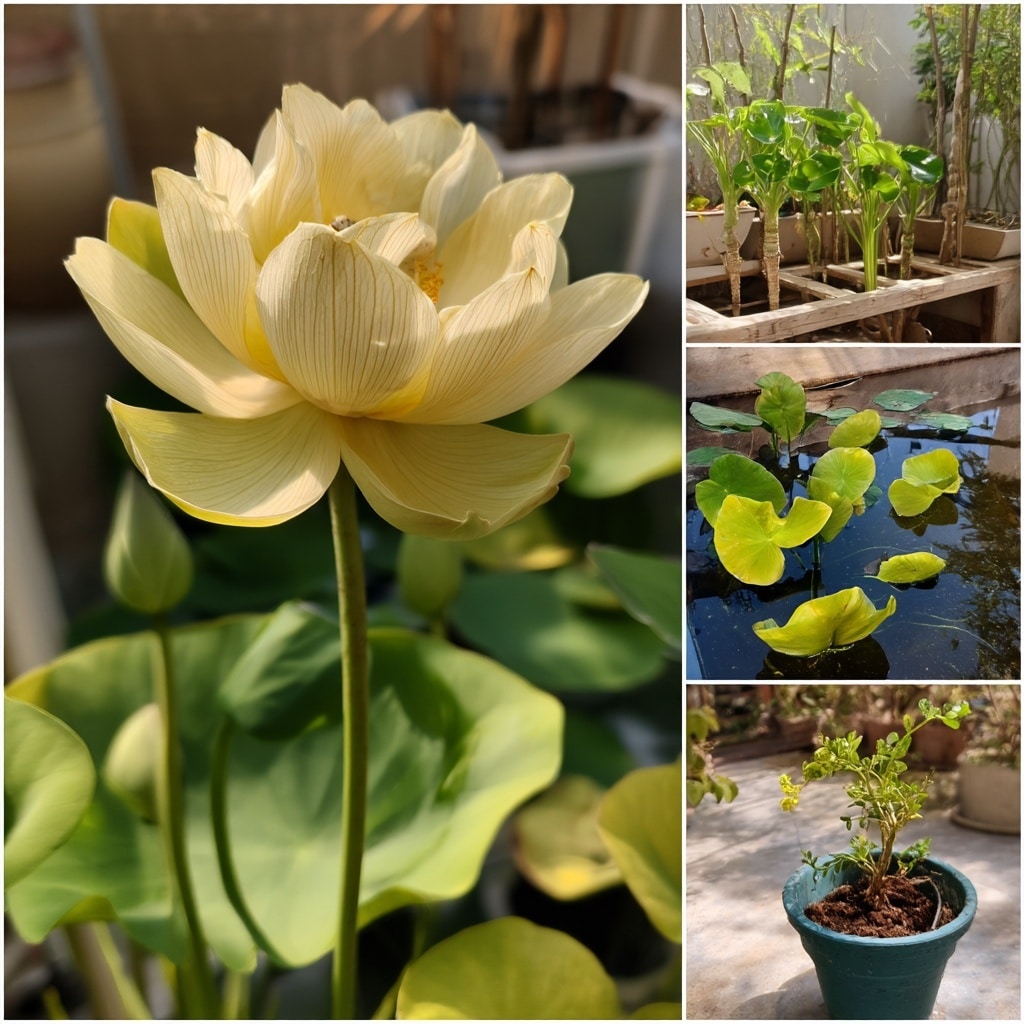Lotus flower cultivation brings elegance and serenity to any water garden, transforming still ponds into living works of art. Revered for centuries in cultures around the world, lotus flowers aren’t just symbolic — they’re surprisingly easy to grow with the right conditions. These aquatic perennials thrive in warm, sunny environments and reward patient gardeners with large, vibrant blooms that rise above the water’s surface. Whether you’re planting in a backyard pond, a container, or a decorative water feature, understanding the lotus flower’s unique needs is the key to long-lasting beauty and health.
What Is a Lotus Flower?
The lotus flower (Nelumbo spp.) is a striking aquatic plant known for its upright leaves and large, fragrant blooms that sit gracefully above the water’s surface. Often mistaken for water lilies, lotus plants are botanically different — water lilies have floating leaves and flowers, while lotus leaves and blooms emerge above the water on sturdy stems.
There are two main species of lotus: the Sacred Lotus (Nelumbo nucifera) and the American Lotus (Nelumbo lutea). The Sacred Lotus, native to Asia, typically features soft pink or white blooms and holds deep cultural and spiritual significance. The American Lotus, found across parts of North America, has yellow or creamy-white flowers and is prized for its resilience.
Lotus flowers are perennials, returning each year when planted in the right conditions. They spread via rhizomes — thick, underground stems that store energy — allowing the plant to expand naturally over time. The combination of dramatic blooms, lush foliage, and minimal care requirements makes the lotus flower a perfect centerpiece in many garden ponds or containers.
Ideal Conditions for Growing Lotus Flowers
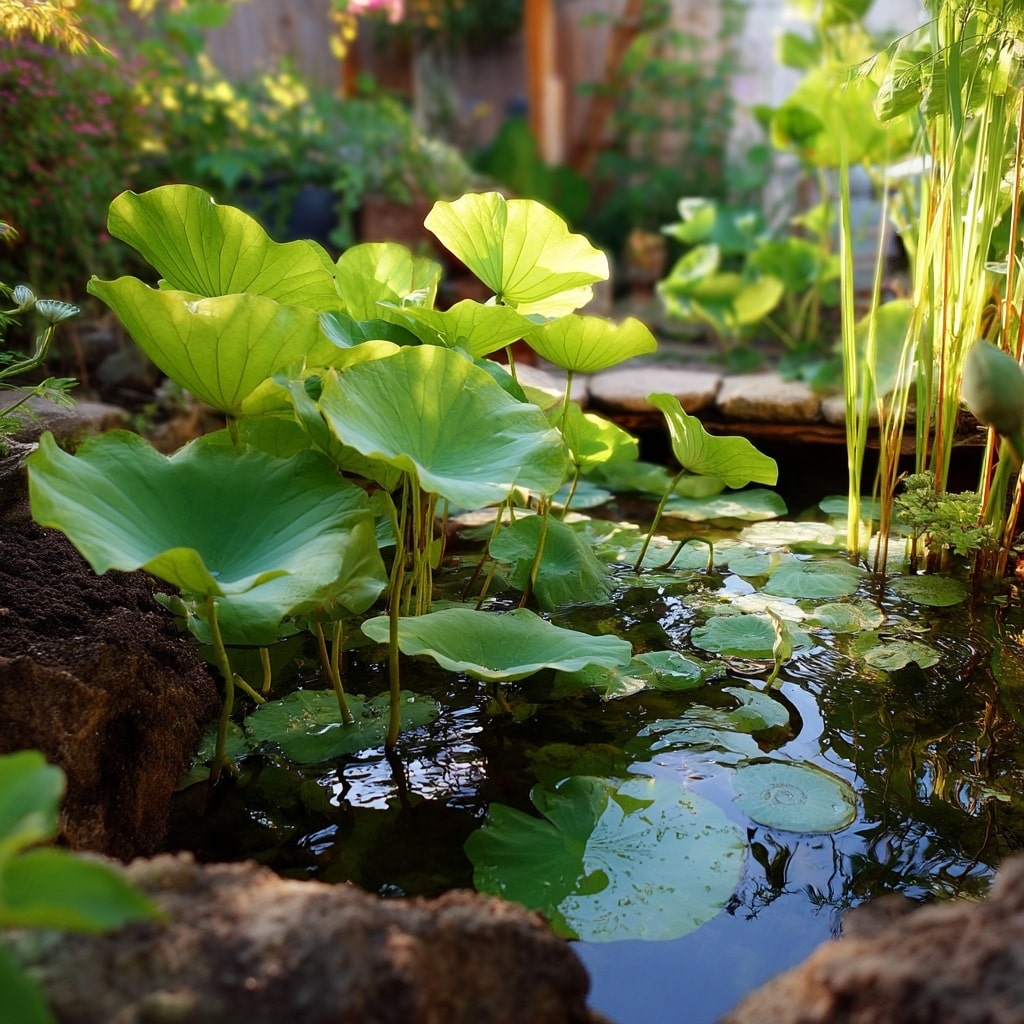
Creating the right environment is essential for helping your lotus flower thrive. These plants aren’t fussy, but a few key factors will make a big difference in bloom quality and plant health.
Sunlight
Lotus flowers need at least 6 hours of direct sunlight each day. Without enough light, the plant may produce lush leaves but fail to bloom. The more sun your lotus receives, the more vibrant and frequent the flowers will be.
If your pond or container garden is shaded for part of the day, try relocating it to a sunnier spot or trimming back overhanging branches.
Soil
Use nutrient-rich, heavy loam or clay soil—not standard potting mix, which is too light and may float away. Aquatic plant-specific soil or a mixture of clay and topsoil is ideal. Avoid soils with perlite or peat moss, which can cloud the water and reduce stability for the plant’s roots.
For potted lotus flowers, keep the soil compact and add a thin layer of gravel or small stones to prevent the soil from dispersing into the water.
Water
Being aquatic, the lotus flower requires wet conditions at all times. The pot or pond must allow the roots to remain submerged, though the shoots and leaves will grow above the water surface.
- Keep young shoots just beneath the water surface to encourage faster growth.
- Avoid fast-flowing or chlorinated water sources.
- Ensure consistent water depth — ideally 2 to 12 inches above the soil for most lotus types.
Temperature and Humidity
Lotus plants are surprisingly hardy. Most varieties can survive winter in USDA Zones 4 through 10, as long as the water doesn’t freeze solid.
- In colder climates, use a water heater or submersible pump to prevent ice formation.
- In containers, overwinter by moving them to a cool, frost-free space like a basement or garage and keeping the soil moist.
Warm, humid environments encourage stronger growth and earlier blooming. Once temperatures reach 75°F (24°C) consistently, growth will accelerate.
How to Plant a Lotus Flower
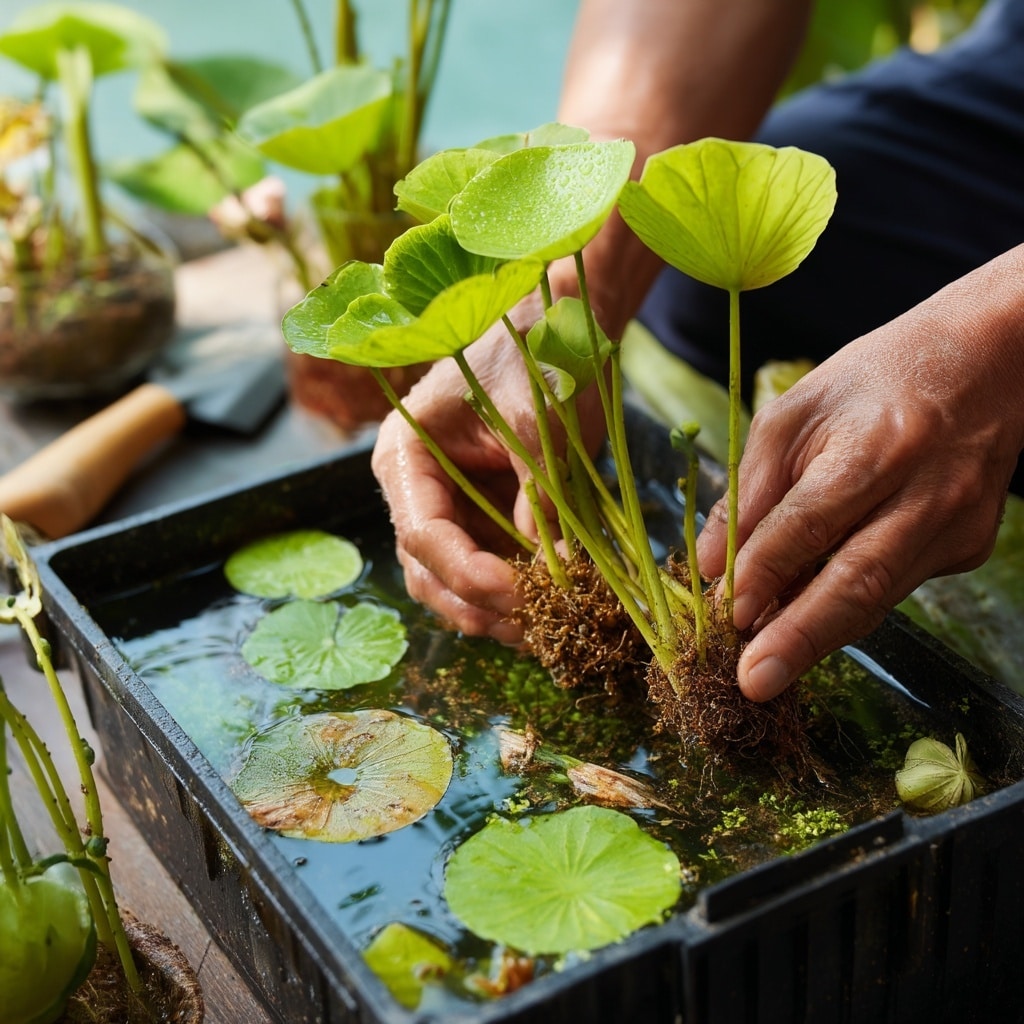
Planting a lotus flower is a rewarding process that begins with selecting healthy rhizomes and preparing the right container or pond setup. Whether you’re using a decorative water bowl or a backyard pond, following a few simple steps ensures strong growth and vibrant blooms.
From Rhizomes: Step-by-Step
- Choose a Healthy Rhizome
Look for a firm, blemish-free rhizome with visible growing tips (called “eyes”). Avoid rhizomes that are shriveled or moldy. - Prepare the Pot
Select a wide, shallow container (at least 14–16 inches across, 6–10 inches deep) with no drainage holes to keep water in. Line the bottom with 4–6 inches of heavy loam or aquatic soil. - Plant the Rhizome
Gently press the rhizome horizontally into the soil with the growing tip exposed. Do not bury the tip, or it may rot. Cover lightly with soil and top with small gravel to keep everything in place. - Add Water
Slowly fill the pot with water until it covers the rhizome by 1 to 2 inches. As the plant grows, you can increase the water depth gradually, but never submerge the leaves. - Place in Sunlight
Move the container to a full-sun location, where it will receive at least 6–8 hours of direct light daily. In a pond, submerge the pot so the water stays at the right level over the soil. - Wait Patiently
Lotus flowers may take several weeks to sprout, especially in cooler spring temperatures. Once leaves begin to emerge, growth will be rapid.
🪷 Water Garden & Container Tips
- Use solid plastic containers specifically designed for aquatic plants; avoid mesh or porous pots that allow soil to escape.
- In ponds, containers make it easier to control spreading and simplify maintenance.
- For small spaces, choose miniature or dwarf lotus cultivars that are suited to containers.
Pro Tip: Keep the water still. Avoid placing lotus near fountains or waterfalls, as the turbulence can disturb their growth.
Lotus Flower Varieties to Consider
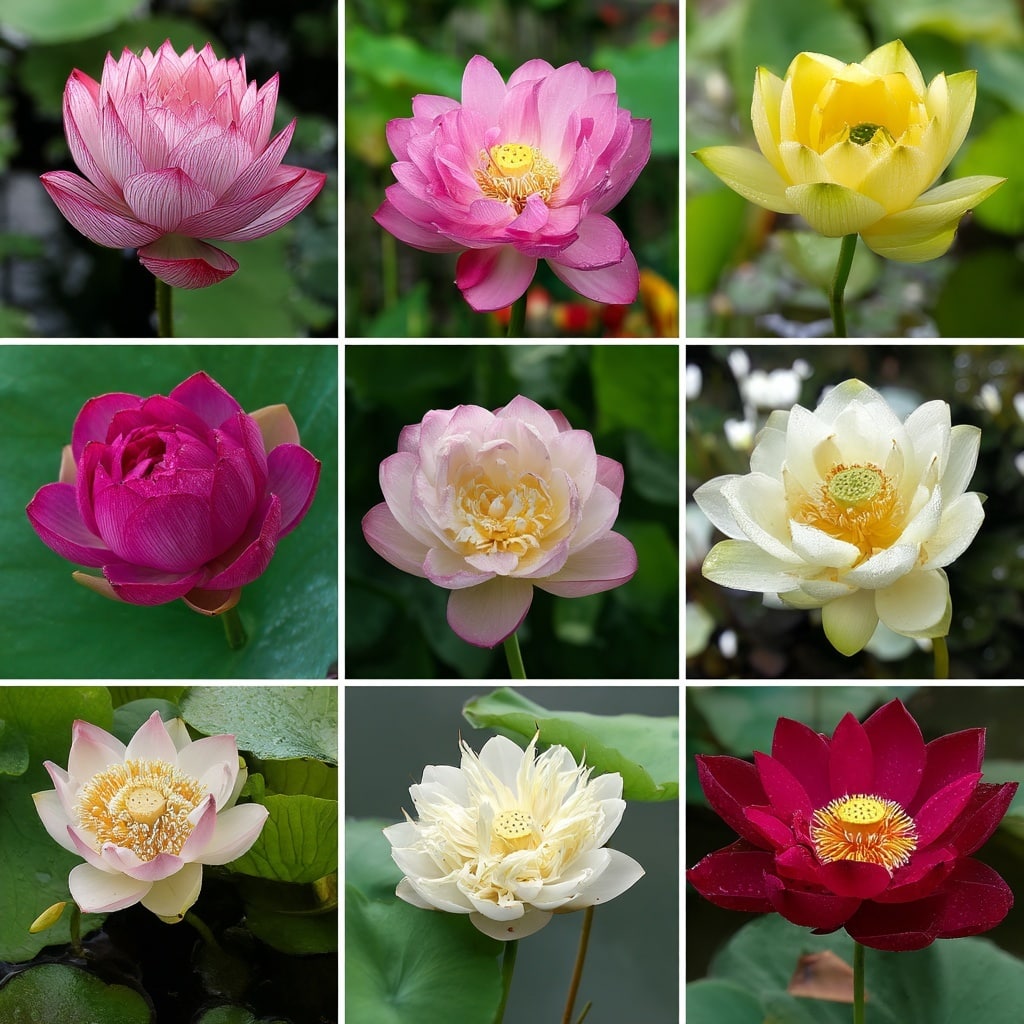
There are dozens of lotus flower varieties available, each offering different colors, bloom sizes, and growth habits. Choosing the right one depends on your space, climate, and aesthetic preferences. Here are some standout types worth planting:
Popular Lotus Varieties
- Sacred Lotus (Nelumbo nucifera)
This iconic variety features large, fragrant blooms in shades of pink or white. It holds deep cultural and religious significance, especially in Asia. Ideal for medium to large ponds. - American Lotus (Nelumbo lutea)
Native to North America, this variety produces yellowish-white blooms up to 10 inches across. It’s hardy, spreads well, and is often used in naturalized water gardens.
Cultivar Highlights
- Mrs. Perry D. Slocum
A show-stopping lotus with double blooms that change color as they age—from pink to yellow to creamy white. Grows well in large containers or ponds. - Chongban Bayi Lian
A micro-lotus perfect for small pots. It has charming double petals with pink edges and a golden center—ideal for balconies or patios. - Green Jade of Qinhuai
A rare beauty with double white petals and a green-tinted center. Small and elegant, it fits perfectly in compact water features. - Sunburst
Bright yellow, fast-growing, and resilient—great for beginners looking for a hardy lotus that makes a bold visual impact. - Pink Beauty
Features soft pink petals with darker centers. A favorite among gardeners for its classic look and consistent blooming. - Ancient Capitol Red Palace
Deep red flowers with tall 48-inch stems—an excellent vertical accent in larger ponds or water beds.
Choosing the Right Variety
- For small containers: Look for micro or dwarf varieties like Chongban Bayi Lian or Green Jade.
- For cold climates: Choose hardy cultivars like Missouri or American Lotus.
- For dramatic effect: Use tall, bold bloomers like Ancient Capitol Red Palace in the center of your water feature.
Many modern cultivars are hybrids of N. nucifera and N. lutea, bred for unique colors, bloom shapes, and climate adaptability.
Care and Maintenance Tips
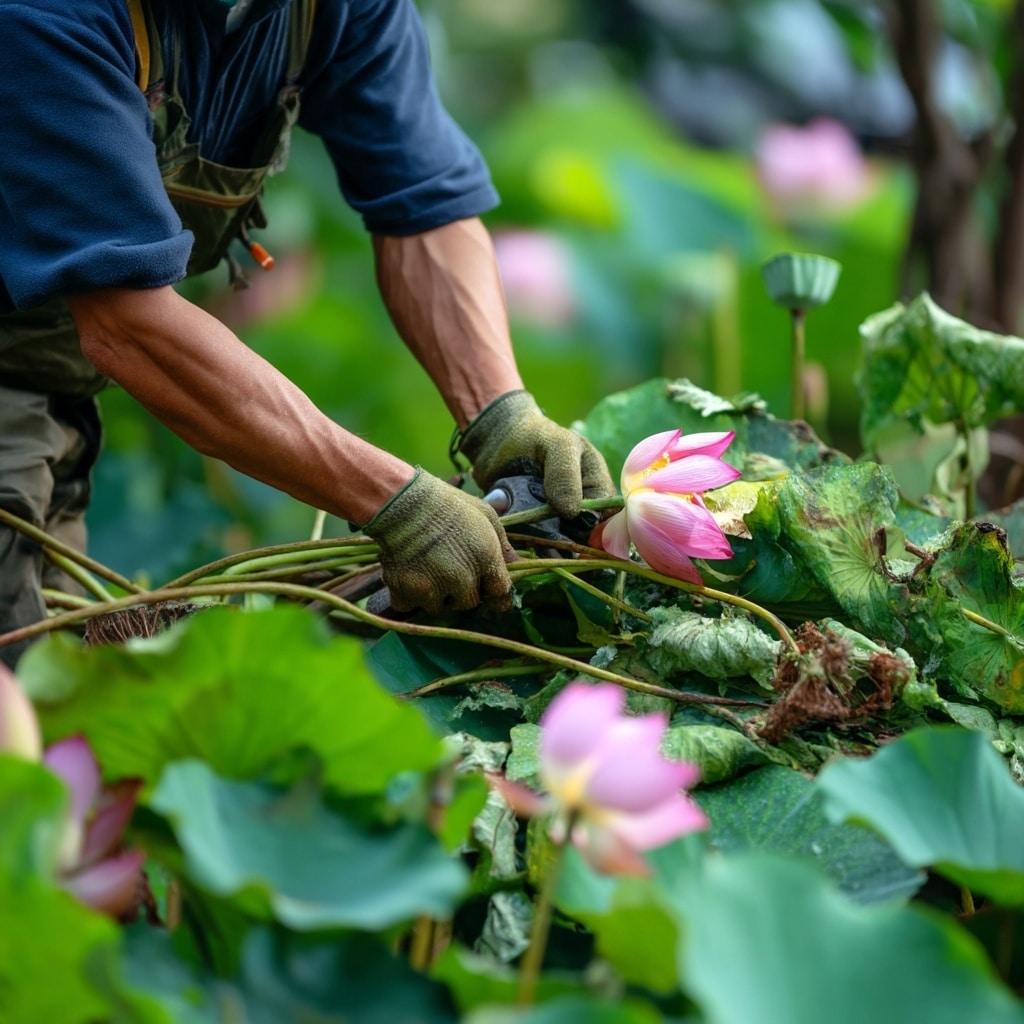
Once established, a lotus flower is fairly low-maintenance. Still, a few simple routines throughout the year will keep your plants blooming and healthy.
Fertilizing
Fertilizer is essential for container-grown lotus, especially during the growing season.
- Begin feeding once the plant has developed at least 3 floating leaves.
- Use a slow-release aquatic fertilizer or a water-soluble formula (like 20-10-20 NPK).
- Fertilize every 2–3 weeks during active growth (late spring through summer).
- Avoid over-fertilizing, which can burn roots and reduce blooming.
Do not fertilize newly planted rhizomes until they have leaves.
Pruning
Regular pruning helps direct energy into new growth and keeps your lotus tidy.
- Remove yellow or dead leaves as they appear. Snip them at the base of the stem.
- Cut spent flower stalks to encourage more blooms.
- In fall, after blooming ends, you can cut back stems and allow the plant to go dormant naturally.
Overwintering
Lotus flowers are hardy, but care is needed in colder climates to protect them during dormancy.
In Ponds:
- Ensure the water doesn’t freeze solid—place pots in the deepest part of the pond.
- Add a circulation pump or pond heater in freezing zones.
In Containers:
- Bring the pots indoors before the first frost.
- Store in a cool, dark place (like a basement or garage) where temps stay above freezing.
- Keep the soil damp, not soggy—check every few weeks.
Tip: Never allow rhizomes to dry out completely during dormancy. Moisture is key to survival over winter.
Common Issues and Troubleshooting

Even though lotus flowers are generally resilient, they can encounter a few problems—especially when growing in containers or smaller ponds. Here’s what to watch out for:
Pests
Several pests are known to target lotus plants:
- Aphids (especially water-lily aphids): These small insects gather on stems and leaves, sucking sap and weakening growth.
- Spider mites: Cause tiny yellow speckles and webbing on leaves.
- Snails and slugs: Feed on tender young leaves and can cause significant damage.
- Leaf miners: Create winding, white trails inside leaves.
Solutions:
- Remove pests by spraying leaves with a strong jet of water.
- Use organic neem oil or insecticidal soap (safe for aquatic plants).
- Handpick snails or apply slug and snail bait around the pond edges (ensure it’s wildlife-safe).
Diseases
- Fungal infections: Appear as black spots, wilting, or mushy leaves.
- Root rot: Caused by overwatering or stagnant, unclean water.
Solutions:
- Improve water circulation and cleanliness.
- Remove any decaying plant matter promptly.
- Apply a pond-safe fungicide if needed.
Lack of Blooming
One of the most common complaints: lush leaves but no flowers. This can usually be traced to:
- Not enough sunlight (less than 6 hours per day)
- Overcrowded or root-bound rhizomes
- Poor soil or lack of nutrients
- Incorrect water depth (too deep or too shallow)
Solutions:
- Move your plant to a full-sun location.
- Divide and replant rhizomes if your container is crowded.
- Fertilize consistently once growth begins.
- Adjust water level so the rhizome is 1–4 inches below the surface, depending on variety.
Propagation Tips

The easiest and most reliable way to propagate a lotus flower is by dividing its rhizomes in early spring—just before or as new growth begins. While lotus plants can grow from seeds, it’s a slower process and often yields unpredictable results.
How to Divide Lotus Rhizomes
- Remove the Plant Gently
Take the lotus out of its container or dig it up from the pond when it’s still dormant (before new leaves form). Be careful not to snap the rhizomes. - Clean and Inspect the Rhizomes
Rinse off soil and debris to identify healthy sections. Look for firm, plump rhizomes with at least one visible growing tip or “eye”. - Cut Into Sections
Using a clean, sharp knife, cut the rhizome into 3–6 inch sections, making sure each has at least one eye and no signs of rot or damage. - Replant Immediately
Plant each division into a new container or location following the same method used for mature rhizomes:- Tip facing up
- Half-buried in soil
- Covered with gravel
- Submerged in warm, shallow water
- Maintain Warm Conditions
Keep new divisions in full sun and ensure water temperatures are consistently warm. Early spring-planted rhizomes typically start growing in a few weeks.
Seed propagation is possible but less common for home gardeners, as it requires scarification (scratching the hard seed coat) and several years to bloom.
FAQs About Lotus Flowers
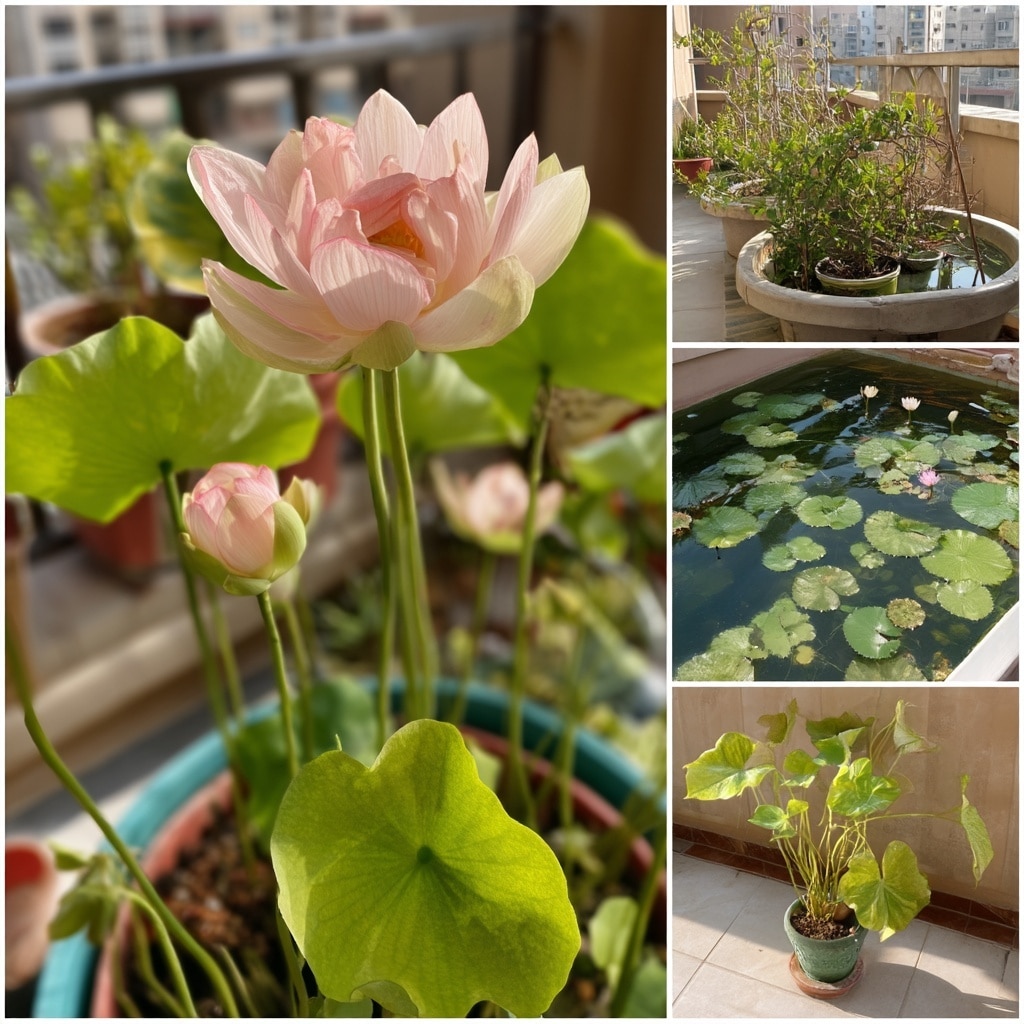
How long does a lotus flower bloom last?
Each lotus flower bloom typically lasts 3 to 5 days, opening in the morning and closing by afternoon. A healthy plant will produce multiple blooms throughout the summer.
Can lotus flowers survive winter?
Yes — lotus plants are hardy perennials. In USDA zones 4–10, they can survive winter as long as the rhizomes don’t freeze. In colder regions, either sink containers deeper in the pond or move them indoors.
Do lotus flowers need to be submerged?
Only the roots and rhizomes need to stay submerged in water. The leaves and flowers rise above the surface, unlike water lilies which float.
Are lotus flowers safe for fish ponds?
Yes! Lotus plants are safe for koi, goldfish, and other pond life. In fact, they provide shade, reduce algae growth, and help maintain water balance. Just protect young shoots from curious fish.
Can I grow lotus flowers in a container?
Absolutely. Many gardeners successfully grow lotus flowers in pots on patios, decks, or balconies. Just choose a large, wide container with no drainage holes, and follow the soil and sunlight guidelines.
Conclusion
Growing a lotus flower in your water garden adds unmatched beauty, movement, and serenity to any outdoor space. With the right sunlight, soil, and care, even beginner gardeners can enjoy the stunning blooms that rise majestically above the water each summer. Whether planted in a decorative container or a backyard pond, lotus flowers reward patience with long-lasting elegance and surprisingly low maintenance. Just remember: full sun, wet feet, and winter protection are the keys to success.


